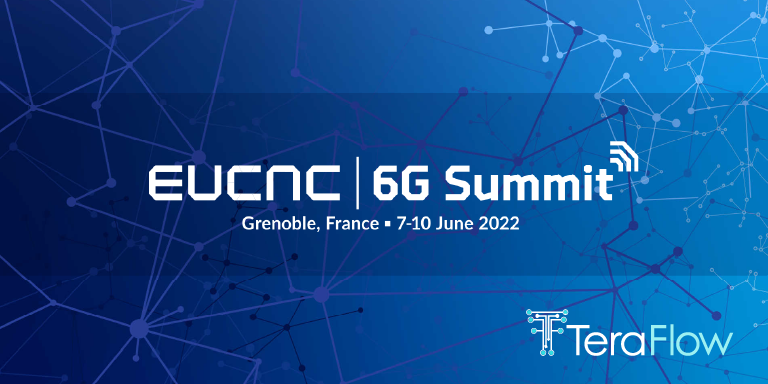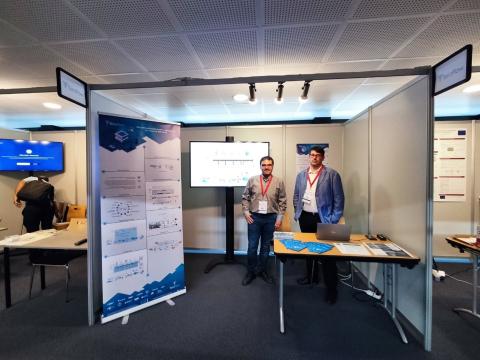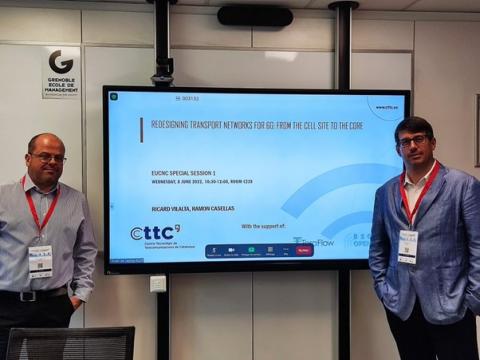The 2022 EuCNC & 6G Summit put together two successful conferences in the area of telecommunications: EuCNC (European Conference on Networks and Communications), supported by the European Commission, and the 6G Summit. The conference was sponsored by the IEEE Communications Society and by the European Association for Signal Processing, and focused on telecommunications from 5G deployment and mobile IoT to 6G exploration and future communications systems and networks, including experimentation and testbeds, and applications and services. It brought together research and industries and businesses. In the last years it attracted more than 1300 delegates from more than 40 countries all over the world, to present and discuss the latest results, and an exhibition with more than 70 exhibitors, for demonstrating the technology developed in the area, namely within research projects from EU R&I programmes.
This year the conference intended to be held for in-person attendance - with some remote attendance in a hybrid mode. Within this conference, TeraFlow was invited to participate in a workshop and will host a special session. TeraFlow was exhibited in booth #30.
On 7th June 2022 at 14:00-15:30 TeraFlow was invited to participate in Workshop 2, “The 6G workshop series by Hexa-X”. The Hexa-X project is building the foundation for a future 6G system by consolidating the views from the 25 partners - from leading academic institutions to industry players - about enhanced radio performance, combined communication and localization/sensing, connected intelligence with integrated AI/ML, network evolution expansion, exploring new network architectures and novel verticals. Hexa-X invited other ICT-52 6G technical enabler projects to this workshop, as well as through an open call for technical contributions. TeraFlow participated on Session 3 – Connecting intelligence with the presentation TeraFlow: ML-based attack detector for Teraflow OS, hosted by Alberto Mozo (UPM) and Antonio Pastor (Telefonica)
On 8th June 2022 at 10:30-12:00 TeraFlow hosted Special session 1: Redesigning Transport Networks for 6G: From the cell site to the core. Session Chairs were Ricard Vilalta and Ramón Casellas (CTTC, ES)
Network operators are only slowly adopting Transport SDN deployments, aiming at network automation across multiple network segments and technologies, while enabling the integration of cell sites with the network core. Several barriers are currently blocking the full adoption of this technology and to fully enable network automation. It is key to define the use cases, workflows and supporting architectures with standard interfaces that can operate in greenfield and brownfield deployments, spanning all involved networking layers, from the access to the long-haul. This session was organized as a set of technical presentations from key actors and experts in the field of transport networks. The proposed list of speakers tried to highlight both the role of industry (operators, and vendors) as well as academia.
This will be the session program
- Introduction to the session, session chairs, Ricard Vilalta and Ramón Casellas (CTTC)
- Invited: An operator’s perspective on SDN control for transport networks, Óscar González (Telefónica),
- Introducing whiteboxes and network orchestration at the cell site, Lluís Gifre (CTTC)
- Multi-Band Optical Networking, achievements and challenges, Antonio Napoli (Infinera)
- Automation and policy management for network orchestration, Georgios Katsikas (Ubitech)
- The role of AI/ML in Intent Based Networking and Closed Loop Optical Networks, Luis Velasco (UPC)
- Cloud-native Security in Transport Networks, Carlos Natalino (Chalmers University)
- Discussion
Besides these sessions, TeraFlow will be shown in booth #30. TeraFlow demonstration will showcase a first proof-of-concept of a B5G-ready cloud-native SDN controller that integrates with NFV framework, and real and emulated equipment, all using standardized interfaces. The capabilities of the TeraFlow SDN, and the integration of its components with external frameworks, are being validated by means of two workflows: zero-touch device bootstrapping and monitoring, and L3-VPN service management. The TeraFlow components are being implemented as microservices in Python (except Automation that is implemented in Java); they are being deployed on top of a Kubernetes-based environment and rely on well-defined TeraFlow-specific gRPC-based messages and services for their internal communications. The Kubernetes environment is deployed at CTTC premises in Castelldefels (Spain). The Data Plane is distributed in two geographical locations, that are interconnected by means of a secured VPN connection. The emulated optical layer, located at CTTC premises, is controlled by means of an OLS Controller and exposes TAPI at its NBI. The packet layer, located at Telefónica I+D premises in Madrid (Spain), consists of 2 Infinera DRX30 routers controlled by means of Netconf/OpenConfig for both the configuration and the monitoring of the devices. The architecture of the demonstration considers the ETSI Open-Source Management and Orchestration (MANO) (OSM) to issue L3-VPN connectivity service requests, the TeraFlow components to handle the requests and the data plane.


